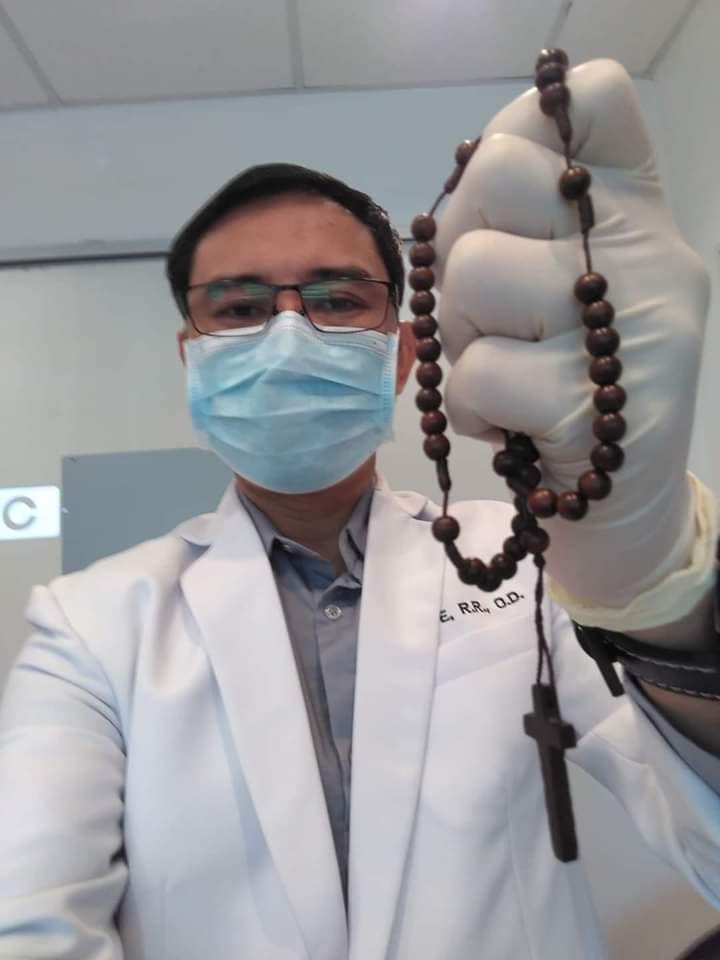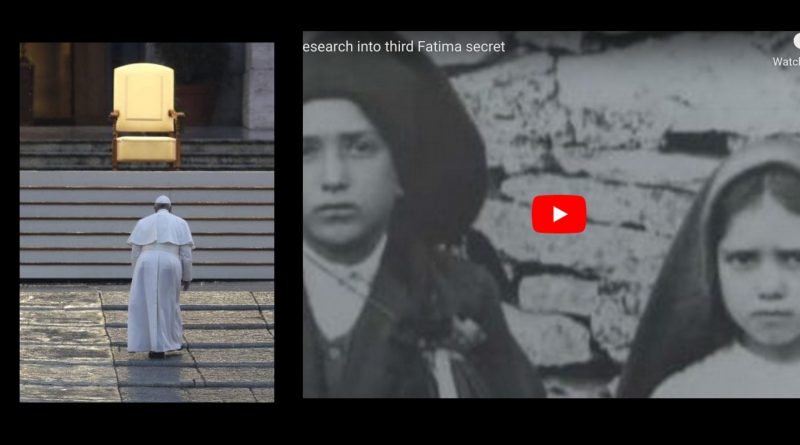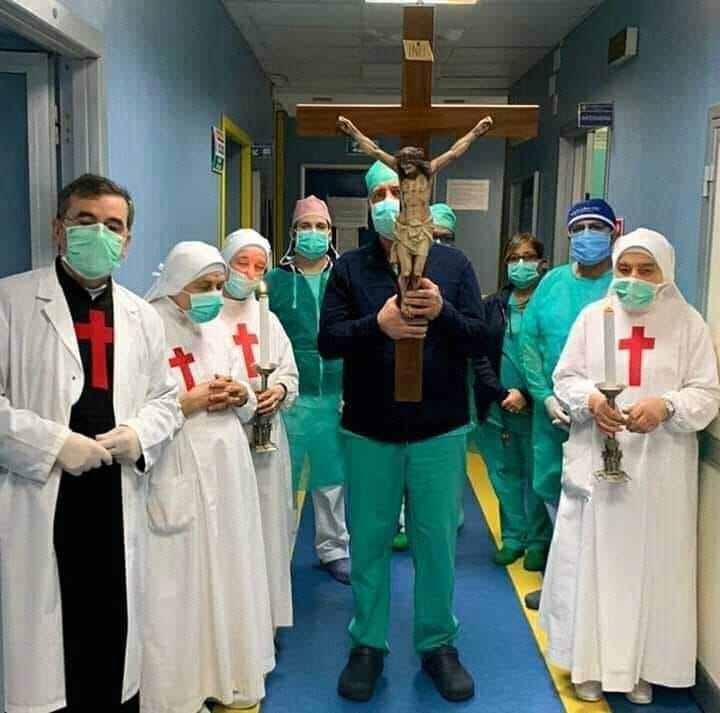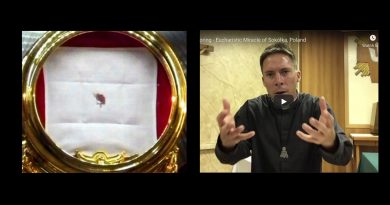Coronavirus and Fatima’s Third Secret “Holy Father passed through a big city (Rome) half in ruins and half trembling with halting step, afflicted with pain and sorrow, he prayed for the souls of the corpses he met on his way.”
Italy is seeing difficulties right now as Coronavirus cases begin to surge in the beleaguered nation. As the streets in Rome stay quiet, the strange atmosphere makes us think of the famous third secret of Fatima.
The “third secret was written down by Sister Lucia, the only survivor among the three children to whom the Virgin Mary appeared at Fatima in 1917. Sister Lucia–now a Carmelite nun–wrote down the text in 1944, at the request of the local bishop.
The following is the full text of the “third secret” in its original translation:
“I write in obedience to you, my God, who command me to do so through his Excellency the Bishop of Leiria and through your Most Holy Mother and mine. After the two parts which I have already explained, at the left of Our Lady and a little above, we saw an Angel with a flaming sword in his left hand; flashing, it gave out flames that looked as though they would set the world on fire; but they died out in contact with the splendor that Our Lady radiated towards him from her right hand: pointing to the earth with his right hand, the Angel cried out in a loud voice: “Penance, Penance, Penance!”
And we saw in an immense light that is God: “something similar to how people appear in a mirror when they pass in front of it,” a bishop dressed in white. “We had the impression that it was the Holy Father.” Other bishops, priests, men and women religious going up a steep mountain, at the top of which there was a big cross of rough-hewn trunks as of a cork-tree with the bark; before reaching there the Holy Father passed through a big city half in ruins and half trembling with halting step, afflicted with pain and sorrow, he prayed for the souls of the corpses he met on his way; having reached the top of the mountain, on his knees at the foot of the big Cross he was killed by a group of soldiers who fired bullets and arrows at him, and in the same way there died one after another the other bishops, priests, men and women religious, and various lay people of different ranks and positions. Beneath the two arms of the Cross there were two angels each with a crystal aspergillum in his hand, in which they gathered up the blood of the Martyrs and with it sprinkled the souls that were making their way to God.
Prayer for Doctors and Nurses
O merciful Father, who have wonderfully fashioned man in your own image, and have made his body to be a temple of the Holy Spirit, sanctify, we pray you, our doctors and nurses and all those whom you have called to study and practice the arts of healing the sick and the prevention of disease and pain. Strengthen them in body and soul, and bless their work, that they may give comfort to those for whose salvation your Son became Man, lived on this earth, healed the sick, and suffered and died on the Cross. Amen.
The world is under attack and Mystic Post is facing real difficulties right now.
We need your help spreading the messages of the Queen of Peace.
We work very hard for Our Lady every day.
Helping to Spread Our Lady’s message of the coming of the Triumph of Her Immaculate heart is our Mission.
Satan is attacking her plans for peace and salvation for the world like never before.
Can you help us today?
 CARDINAL RATZINGER COMMENTS ON FATIMA MESSAGE
CARDINAL RATZINGER COMMENTS ON FATIMA MESSAGEVATICAN (CWNews.com)–In his theological commentary on the “third secret” of Fatima, Cardinal Joseph Ratzinger emphasizes that the key to understanding the Fatima message lies in the words attributed to the Virgin Mary: “Penance, penance, penance!”
Cardinal Ratzinger [now Pope Benedict XVI] adds that a second crucial aspect of the Virgin’s message is her reassurance that “my Immaculate Heart will triumph.”
In the first part of his commentary, the cardinal–who is the prefect of the Congregation for the Doctrine of the Faith–carefully places the Fatima message in its proper context, as a “private revelation.” He explains that private revelations must be distinguished from the definitive public revelation which is contained in the Scriptures as interpreted through the Tradition of the Church.
“In Christ, God has said everything–that is, he has revealed himself completely–and therefore Revelation came to an end with the fulfillment of the mystery of Christ as enunciated in the New Testament,” the German prelate writes.
However, private revelations may and do continue, in the form of various apparitions, admonitions, and messages. A private revelation, Cardinal Ratzinger explains, “is a help to this faith, and shows its credibility precisely by leading back to the definitive public Revelation.”
The Church, through her hierarchy, judges the authenticity of private revelations. In some cases–such as the Fatima apparitions–the Church offers a public approval of the message. In such cases, Cardinal Ratzinger writes, the message can be “a genuine help in understanding the Gospel and living it better at a particular moment in time; therefore it should not be disregarded. It is a help which is offered, but which one is not obliged to use.”
Turning to the content of the “third secret,” the cardinal writes that the prophetic vision which was disclosed to the three young children who saw the Virgin Mary at Fatima was a preview of the twentieth century, the cardinal writes. “In the vision we can recognize the last century as a century of martyrs, a century of suffering and persecution for the Church, a century of world wars and the many local wars which filled the last fifty years and have inflicted unprecedented forms of cruelty.”
That vision is coupled with Mary’s plea for prayer and penance, Cardinal Ratzinger continues. And taken as a whole, the Fatima message is a strong reminder that the crises of the world must finally be resolved not through armed force but through prayer, and reliance on God’s grace. Thus despite its violent imagery and its strong warning tone, the Fatima message concludes with a note of confidence: “my Immaculate Heart will triumph.”
“To understand the signs of the times,” the cardinal writes, “means to accept the urgency of penance, of conversion, of faith. This is the correct response to this moment of history, characterized by the grave perils outlined in the images that follow.”
Cardinal Ratzinger discloses that he spoke with Sister Lucia–the sole surviving Fatima seer–about the content of the entire Fatima message. He reports that “Sister Lucia said that it appeared ever more clearly to her that the purpose of all the apparitions was to help people to grow more and more in faith, hope, and love–everything else was intended to lead to this.”
In the “third secret,” Sister Lucia writes about the vision of an angel with a flaming sword. That image, Cardinal Ratzinger notes, is a common one from the Book of Revelation, and it represents “the threat of judgment which looms over the world.” During the twentieth century, when warfare threatened millions of people with instant annihilation, that threat of judgment became particularly immediate, he observes. However, the cardinal continues, the threat is balanced by the image of “the splendor of the Mother of God.” And in her message to the children of Fatima, the Virgin Mary emphasized the need for prayer and penance.
“In this way, the importance of human freedom is underlined,” Cardinal Ratzinger writes. The dangers which threaten the world can be avoided, if people answer Mary’s call to penance. In short, the cardinal explains, “the vision speaks of dangers and how we might be saved from them.”
“In the vision we can recognize the last century as a century of martyrs, a century of suffering and persecution for the Church, a century of World Wars and the many local wars which filled the last fifty years and have inflicted unprecedented forms of cruelty,” Cardinal Ratzinger writes.






